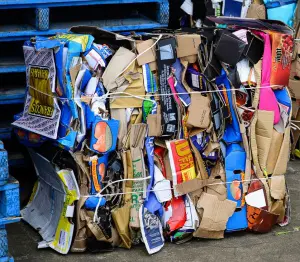Global – The following article is based on the latest Paper World Mirror produced by the BIR world recycling organisation for the benefit of its members.
During the course of the first quarter of 2015, OCC prices fell from typically US$ 168-plus per tonne to US$ 160-plus while mixed paper slid more sharply from US$ 135-plus to US$ 120-plus. Prices have remained generally weak despite the fact that, in the aftermath of the Chinese New Year holidays, the Chinese and wider Asian markets have gradually intensified their demand for European fibre, partly in response to a steady reduction in mill inventories of recovered paper.
Quality concerns are still the main factor influencing Asian mills’ fibre buying decisions as environmental authorities look to impose tighter controls on imports. In China, these strictures ‘have resulted in some mills being forced to shut down’ while the government in Indonesia recently announced plans to intensify pre-shipment inspections, with controls expected ultimately to be akin to those implemented by the Chinese authorities through their Green Fence policy.
In Europe, meanwhile, the headlines have been grabbed by further capacity closures affecting the newsprint sector, including the loss of Aylesford Newsprint in the UK. There was an immediate reduction in market prices but a subsequent recovery almost to the levels prevailing prior to the announcement. Although unexpected, the closure ‘has merely removed capacity from the market that would have had to be taken out in any case owing to the worldwide reduction in newsprint consumption’, it is argued.
Also in the UK, full start-up is anticipated shortly of the new Smurfit Kappa machine in Kent, which should have a positive effect on domestic prices for the brown grades, for which demand from mainland Europe has been described as ‘decent’. Feedback from France suggests Asian demand for European-origin lower grades was improved in the first quarter by port congestion and harsh winter weather conditions in the USA, as well as by the Euro’s relative weakness to the dollar. In Spain, local demand for OCC was deemed to be ‘strong’ during the first quarter, leading to a price increase of some Euro 15 per tonne.
And in Finland, demand has been healthy for all of the traditional domestic grades of recovered fibre – ‘with shortages apparent in some’. The country’s paper and board, tissue, newsprint and coreboard mills are all said to be ‘running well’. Staying in Europe, several countries have recently published paper recycling statistics for last year.
In the case of Germany, the data reveal that the domestic paper industry used 16.62 million tonnes of recovered fibre in 2014, or 133 000 tonnes more than in the previous year while its exports dropped almost 16% to 2.34 million tonnes owing to increased demand at home and ‘the cyclical decline in China’s demand for recovered paper from Europe’.
The 2014 statistics for Sweden ‘indicate big changes in the local market’ as recovered fibre consumption by domestic paper mills fell 9% to 1.248 million tons, with the news & pams total slumping 28% to 421 000 tons and that for OCC climbing 5% to 509 000 tons. The country’s recovered paper imports dropped 9% to 449 000 tons last year while exports gained 3% to 353 000 tons, with overseas shipments of the news grades doubling to 58 000 tons whereas OCC exports fell 5% to 189 000 tons.
‘Shipments to Poland and Germany from the south of Sweden fell back during the first quarter (of 2015),’ it is noted. Recovered paper shipments out of the Czech Republic surged 16% last year to 730 000 tons while consumption by domestic mills jumped 14%. ‘Collection volumes recorded their biggest annual growth of around 100 000 tons, or some 12%, which was absorbed by the market and consequently exported without any problem,’ it is pointed out.
Heading further east, new recycled product capacities continue to emerge. In Turkey, for example, Modern Karton’s latest development, which has the capability to produce 400 000 tonnes per annum, is expected to go live in the second quarter and duly increase Turkish imports. Kartonsan’s KM2 investment, meanwhile, is thought likely to reach full capacity in the current quarter too.
And across in Vietnam, a number of mills are said to have capacity expansions plans; Lee & Man Paper Manufacturing, for instance, ‘is pressing ahead with the construction of a new 400 000 tonnes per year recycled containerboard investment at a greenfield site in Hau Giang province’. On the downside, growth in domestic consumption of paper products is currently falling short of expectations such that mills are forced to resort on occasions to selling into the export market – a business option that is described as ‘rarely profitable’ for them.
Don't hesitate to contact us to share your input and ideas. Subscribe to the magazine or (free) newsletter.



